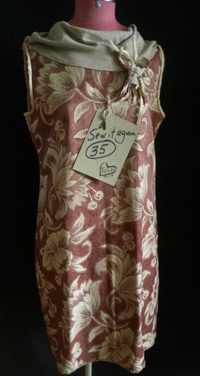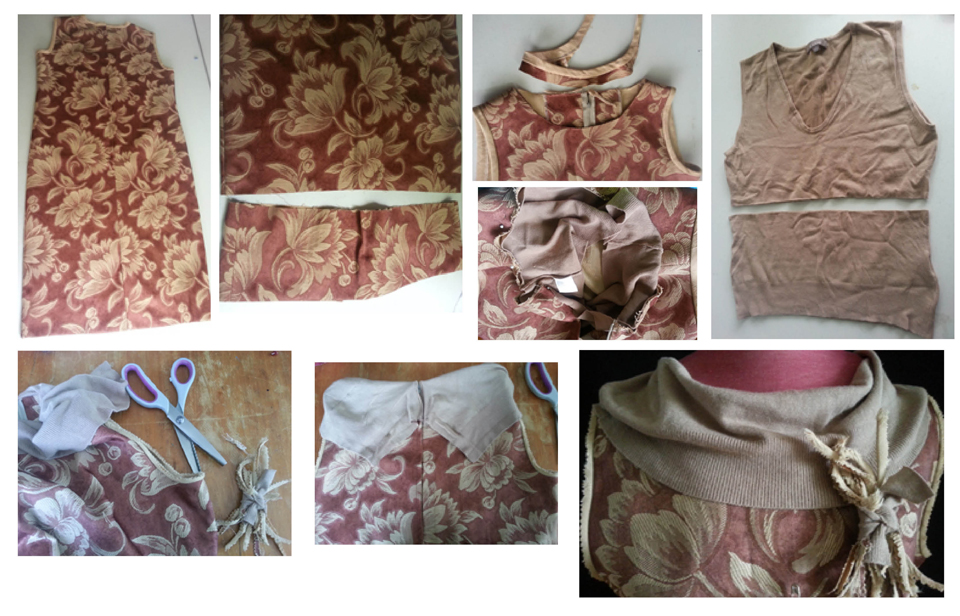 This op shop dress was done over by shortening it, taking pinking shears to the armholes then adding a knit-fabric collar cut from the bottom-half of an op shop vest.
This op shop dress was done over by shortening it, taking pinking shears to the armholes then adding a knit-fabric collar cut from the bottom-half of an op shop vest.
Resewing existing clothing for a second life is creative, ethical, thrifty, sustainable – and fun. It takes is a little time (making that is the hard part), a simple sewing skills and imagination.
Society is now much more aware of where food comes from and its impact on our health and environment – and is gradually coming to consciousness about where clothing comes from and its equivalent impacts.
In her book Sew Eco, Ruth Singer says the textile and fashion industries are fraught with potential environmental and ethical issues. Some to consider are:
- Chemical use in fabric production
- Fair and ethical working practices for producers
- The burden of waste textiles in landfill
- The use of precious non-renewable resources
- Pollution caused by production of textiles
- The amount of energy used to produce, process and transport fabrics
- The amount of water used in textile production and processing
I grew up living the simple life on a farm in New Zealand’s South Island where Dad grew vegetables and provided home-raised and butchered meat, Mum sewed our good clothes, Nana made cloth dolls and knitted, and Great Grandma was the master of crochet and homespun wisdom.
The values of simplicity, authenticity and thrift have been with me for a lifetime but weren’t always top of mind as I established a career as a rural journalist/communication consultant after studying agricultural science in Australia along with raising three children with my geologist husband.
I’ve come full circle now after study with the Australian Rural Leadership Foundation and 2/3 offspring are sprung, and am back living those values as I spend this year resewing existing clothing as my little demo to revive home-sewing as a life skill akin to home-cooking.
I picked up this tailor-made dress (with matching coat) at a Gold Coast op shop. It’s quality cotton and appears to be of upholstery weight. I cut the dress off to knee length and zigzagged the hem. I cut out the neckline and added the bottom of a vest as a roll collar by sewing the wrong sides together and letting the collar flop forward over the dress. The fiddly bit was getting it sitting OK at the back around the zip. I trimmed the armholes with pinking shears and instead of throwing out the off-cuts, roughly stitched them together to make a brooch of sorts.
